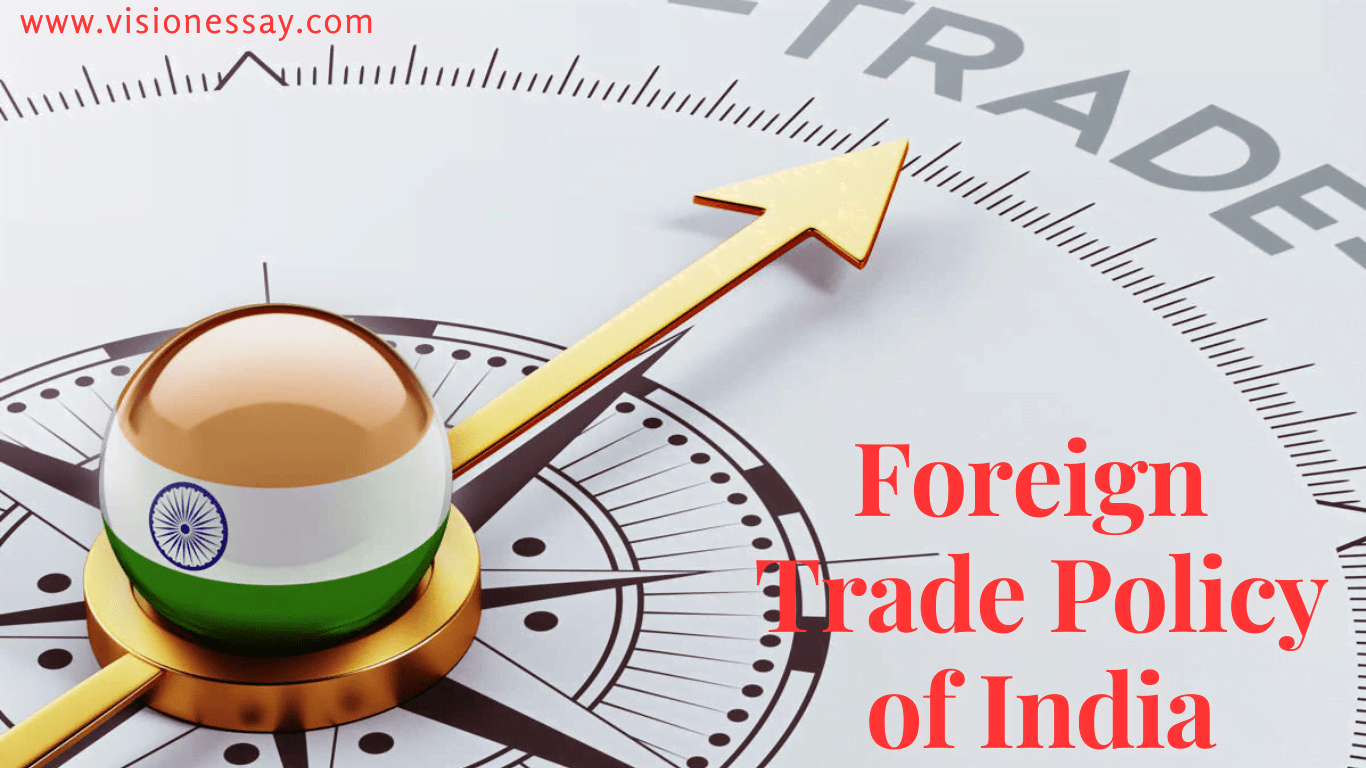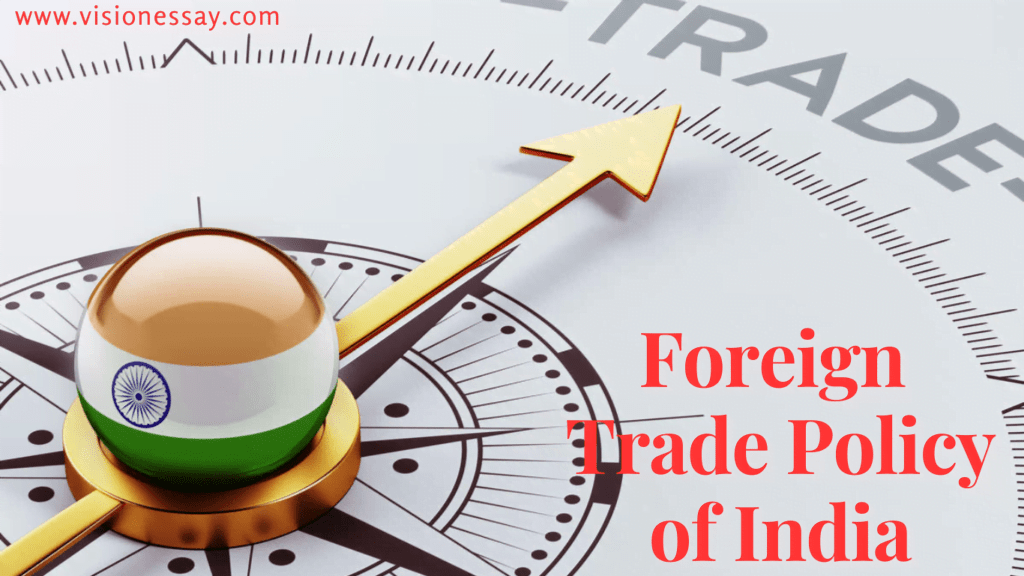New Foreign Trade Policy of India in 2023
Introduction
India’s Foreign Trade Policy (FTP) is crucial to the country’s development and progress economically. The nation has continually worked to deepen its international commercial ties and boost exports. The Indian government has unveiled a new Foreign Trade Policy that went into effect on April 1, 2023, with the intention of advancing “Atmanirbhar Bharat” (self-reliant India) and the country’s trade industry. Significant improvements and opportunities for Indian enterprises to improve their competitiveness on a global scale are anticipated as a result of the new strategy.
What is New Foreign Trade Policy 2023?
- Under S.5 of the Foreign Trade (Development & Regulation) Act, 1992 (FTDRA), the Foreign Trade Policy (FTP) is declared.
- Its goal is to put the FTDRA into effect. A “Handbook of Procedures” (HBP) is also announced with each FTP.
- Since each FTP has so far typically had a five-year lifespan, there is a significant question regarding the sustainability of export incentive programs.
- The FTP 2015-2020 period was extended due to Covid-related requirements.
- Since FTP 2023 and the accompanying HBP do not have an expiration date, it is anticipated that its different schemes will be more certain.
FTP 2023: Key Features
- Trade facilitation
- MEIS was succeeded by RoDTEP, which involved a switch from directly encouraging exports to remission of duties incorporated into exported items.
- Districts as “Export Hubs”: A decentralized strategy for export growth To identify products for the Market Access Initiative (MAI) or the Niryat Bandhu plan, each district shall have a District Export Action Plan.
- Accepting rupee payments is a step towards the internationalization of the currency and the extension of FTP benefits to rupee realizations.
- Export hubs for e-commerce: These hubs with warehouse facilities are designated for e-commerce facilitation; they are notified for stocking, customs clearing, etc.
FTP 2023:The Main Focus
- Integration into the Global Value Chain: By integrating India into the global value chain, the FTP seeks to boost India’s share in international trade. To establish a favorable climate for exporters, the government will concentrate on enhancing infrastructure, logistics, and supply chain effectiveness.
- Technology and Digitization for Trade Facilitation: The FTP emphasizes the use of technology and digitization for trade facilitation. For exporters to quickly access international markets, the government is aiming to create an e-commerce platform. The FTP also provides a number of programs and initiatives to aid in exports, including export incentives, tariff drawbacks, and export promotion capital goods (EPCG) programs.
- Inclusive Approach: The FTP seeks to provide advantages to all export ecosystem participants, including little businesses. The focus on e-commerce and the “Local goes Global” strategy will make it possible for small enterprises to enter new markets and increase their clientele.
- Boost for Exporters: By lowering transaction costs, improving logistics and supply chain effectiveness, and offering export incentives, the FTP strives to create an enabling environment for exporters. Exporters will be able to grow their enterprises and access new markets thanks to this.
Also Read: Freedom of Press in India in 2023
Encouraging International Trade in the Digital Economy
- The FTP encourages e-commerce exports through postal routes and increases the value cap for exports via couriers to INR 1,000,000 per consignment, in addition to extending benefits available under the FTP to e-commerce exports such as export incentives and duty drawbacks.
- To make it easier cross-border e-commerce activity, the FTP intends to establish E-Commerce Export Hubs (ECEHs). These hubs will act as a focal point for beneficial commercial infrastructure and facilities, facilitating cross-border e-commerce for exporters.
- In order to promote cross-border e-commerce, the FTP suggests setting up E-Commerce Export Hubs (ECEHs). The facilitation of cross-border e-commerce by exporters would be made possible by these hubs, which will act as a focal point for beneficial business infrastructure and facilities.
- ‘Dak Niryat Kendras,’ or export facilitation centers, are what the FTP seeks to operationalize. With the help of these centers, artisans, weavers, craftspeople, and MSMEs in the hinterland and landlocked regions would be able to access global markets and engage in cross-border e-commerce. By doing this, the FTP hopes to strengthen small and medium-sized businesses and encourage their involvement in international e-commerce.
Establishing Districts as Export Hubs
- In India, FTP aims to encourage the growth of export centers at the district level. The objective is to locate goods and services in each district with export potential and advertise them to a larger market.
- The FTP suggests setting up District Export Promotion Committees (DEPCs) and creating online-monitored District Export Action Plans for each district to accomplish this. These plans will serve as a road map for each district’s development of infrastructure, services, and expertise geared toward exports.
- In order to attract more exporters, the FTP seeks to identify two to three high-potential goods or services in each area. It then organizes outreach events like buyer-seller meetings, trade shows, and workshops. Through these initiatives, local producers will be able to interact with customers and dealers from different areas and nations and establish a presence on the international market.
- The FTP seeks to advance decentralization and inclusive growth by creating export hubs at the district level, allowing small and medium-sized businesses to engage in the international trade ecosystem.
Towns of Export Excellence
- Four new “Towns of Export Excellence” (TEE), or locations with a concentration of businesses that specialize in a particular good or service, have been designated by the FTP. By utilizing the towns’ already-existing advantages, Indian enterprises may use them to access new markets and climb up the value chain.
- The 39 existing towns of export excellence are joined by the four new TEEs. The four new TEEs are located in Varanasi (Handloom and Handicraft), Moradabad (Handicrafts), Mirzapur (Handmade Carpet and Dari), and Faridabad (Apparel). These communities have made a name for themselves as the nation’s primary export centers thanks to their reputation for producing high-quality goods.
- Priority funding under the Market Access Initiative Scheme is given to recognized associations of units in TEEs for export promotion projects involving marketing, capacity building, and technology services. This assistance attempts to increase the units in these towns’ competitiveness and give them better access to international markets.
- The Export Promotion Capital Goods (EPCG) scheme will grant licenses to Common Service Providers (CSPs) in certain regions. A company that provides services to a number of people or companies in one area or industry is known as a common service provider (CSP). Under this program, CSPs are permitted to import capital goods at reduced customs duty rates for their own use, provided that certain export obligations are met. These extra advantages will help promote regional handicrafts and industries while also supporting local industries and artisans’ livelihoods.
Issues with the new FTP 2023 policy
| Issues | Description |
|---|---|
| 1. Non-updation of the 1992 Act | In accordance with the Foreign Trade (Development & Regulation) Act of 1992, the Central Government notifies the FTP. However, rather than promoting commerce, this law continues to place more emphasis on controlling and limiting it. |
| 2. Not focusing on quality and efficiency | It continues to rely on export incentives rather than the new trade policy tools, which are increases in product quality and manufacturing efficiencies. |
| 3. Restrictions on the Directorate General of Foreign Trade (DGFT) | Instead of decreasing its regulatory responsibilities and turning the DGFT into a facilitator, it still places import “prohibitions” or “restrictions” on it. |
| 4. Not addressing the weakness of the RoDTEP Scheme | The RoDTEP Scheme exempts or reimburses the exporters for the taxes and levies (imposed on the exported goods). It ignores the less-than-ideal rates of duty remission under the RoDTEP mechanism. |
| 5. Not addressing the issues with developing districts as export hubs | In accordance with the Foreign Trade (Development & Regulation) Act of 1992, the Central Government notifies the FTP. However, rather than promoting commerce, this law continues to place more emphasis on controlling and limiting it. |
| 6. Issue with the Inclusion of e-commerce | The FTP’s inclusion of e-commerce could give the incorrect impression that India is prepared to discuss this matter with the WTO. |
Conclusion
India’s new Foreign Trade Policy represents an important turning point in the growth and development of the nation’s economy. It is anticipated that the strategy will improve India’s commercial ties with other nations and assist Indian companies in growing their market share internationally. It is anticipated that the emphasis on developing indigenous manufacturing and service industries through export incentives will promote independence and lessen India’s reliance on imports. It remains to be seen how this policy will affect India’s international commerce in the long run, and its success will rely on how well it is implemented. Overall, India’s new Foreign Commercial Policy represents a step toward realizing its goal of dominating the world’s commercial scene.
Frequently Asked Questions (FAQs)
What is the foreign trade policy 2023 analysis?
Overall, the Foreign Trade Policy 2023 creates new development opportunities with a number of additional facilities that make conducting business easier and provide merchants more comfort. By doing away with the sunset clause and replacing it with a system for ongoing improvement, it already stands in opposition to the prior policies.
What is India’s foreign trade in April 2023?
India’s total exports (including both goods and services) are anticipated to reach USD 65.02 billion in April 2023*, representing a rise of 2.0% from that month in the previous year.
Will India’s exports increase in 2023?
When compared to June 2022, when exports of electronic products were USD 1.67 billion, they climbed by 45.36 percent to USD 2.43 billion in June 2023. Exports of electronic items increased by 47.05 percent from April to June 2022 to April to June 2023, reaching USD 6.96 billion as opposed to USD 4.73 billion.
What are the features of FTP 2023?
The goal and plan for creating e-commerce hubs, together with related components including payment reconciliation, bookkeeping, returns policy, and export entitlements, are described in FTP 2023. The consignment-level limit for courier-based E-Commerce exports has been increased from Rs. 5 Lakhs to Rs.
Sources:
- pib.gov.in/PressReleaseIframePage.aspx?PRID=1912572
- India’s New Foreign Trade Policy 2023: All you need to know – India Today
- Directorate General of Foreign Trade | Ministry of Commerce and Industry | Government of India (dgft.gov.in)
- https://www.thehindu.com/business/Economy/foreign-trade-policy-brings-indias-strategic-interests-into-trade-transit-ties/article66692352.ece

